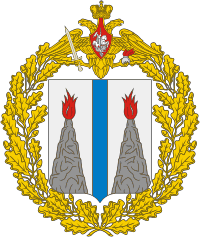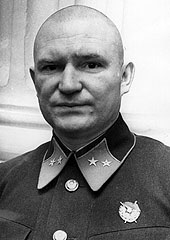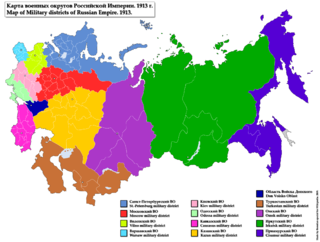Related Research Articles

The Far Eastern Republic, sometimes called the Chita Republic, was a nominally independent state that existed from April 1920 to November 1922 in the easternmost part of the Russian Far East. Although nominally independent, it largely came under the control of the Russian Soviet Federative Socialist Republic (RSFSR), which envisaged it as a buffer state between the RSFSR and the territories occupied by Japan during the Russian Civil War of 1917–1922. Its first president was Alexander Krasnoshchyokov.

The Czechoslovak Legion were volunteer armed forces consisting predominantly of Czechs and Slovaks fighting on the side of the Entente powers during World War I and the White Army during the Russian Civil War until November 1919. Their goal was to win the support of the Allied Powers for the independence of Lands of the Bohemian Crown from the Austrian Empire and of Slovak territories from the Kingdom of Hungary, which were then part of the Austro-Hungarian Empire. With the help of émigré intellectuals and politicians such as the Czech Tomáš Garrigue Masaryk and the Slovak Milan Rastislav Štefánik, they grew into a force over 100,000 strong.

Ieronim Petrovich Uborevich was a Soviet military commander of the Red Army during the Russian Civil War, reaching the rank of komandarm in 1935. He was executed during the Great Purge in June 1937 and was posthumously rehabilitated in 1957.

The Far Eastern Military District was a military district of the Armed Forces of the Russian Federation. In 2010 it was merged with the Pacific Fleet and part of the Siberian Military District to form the new Eastern Military District.

The Siberian Military District was a Military district of the Russian Ground Forces. The district was originally formed as a military district of the Russian Empire in 1864. In 1924 it was reformed in the Red Army. After the end of World War II the district was split into the Western and Eastern Siberian Military Districts. In 1956 the western district's name was changed back to Siberian Military District, and in 1998 the Transbaikal Military District was merged into it. In 2010 it was divided between the two newly formed Central and Eastern Military Districts.
The 52nd Rifle Division was an infantry division of the Red Army during the Russian Civil War, the interwar period, World War II, and the Cold War, formed once during the Russian Civil War and three times during the existence of the Soviet Union.

The Transbaikal Military District was a military district of first the Soviet Armed Forces and then the Armed Forces of the Russian Federation, formed on 17 May 1935 and included the Buryat Republic, Chita Oblast, and Yakutia. Chita was the headquarters of the district. It was finally disbanded on 1 December 1998 by being amalgamated with the Siberian Military District, though Chita remained the headquarters of the new amalgamated district.

Konstantin Apollonovich Koroteyev was a Soviet Army colonel general and a Hero of the Soviet Union.

The White movement in Transbaikal was a period of the confrontation between the Soviets and the Whites over dominance in Transbaikal from December 1917 to November 1920.

The 392nd Hero of the Soviet Union Marshal of the Soviet Union V. I. Petrov Pacific Red Banner Order of Kutuzov District Training Center is a training formation of the Russian Ground Forces. It is located at Knyaze-Volkonskoye in the Khabarovsk area.

Sergey Nikolayevich Voytsekhovsky was a Colonel of the Imperial Russian Army, Major-General in the White movement, and Czechoslovak Army general. He was a participant in the Great Siberian Ice March.
The 12th Rifle Division was an infantry division of the Red Army, formed twice. The division's first formation fought in the Russian Civil War and Polish–Soviet War. It was disbanded in 1921. The division formed again in 1923 at Omsk and spent World War II in Siberia. It participated in the Soviet invasion of Manchuria and was converted into a motor rifle division in 1957.

The Siberian Army was an anti-Bolshevik army during the Russian Civil War, which fought from June 1918 – July 1919 in Siberia – Ural Region.
The 11th Rifle Division was a military formation of the Soviet Union's Red Army. Its personnel were involved in the protection of the demarcation line in Pskov, defensive battles against the Army of the Southern Front in Krasnov Novohopersk - Borisoglebsk, against the army and the forces of Estonia, Bulak Balakhovich in Marienburg in defense of Petrograd and as the offensive against Yudenich's troops in Pskov the Luga-Gdov, Yamburg, Narva, Dvina-Rezhitsk directions, the Polish-Soviet war of 1920, in the suppression of the Kronstadt uprising participated in the Soviet-Finnish War and World War II.

The Battle of Tsaritsyn was a military confrontation between the Red Army and the White Army during the Russian Civil War for control of Tsaritsyn, a significant city and port on the Volga River in southwestern Russia.
The 35th Rifle Division was a division of the Red Army that fought in the Russian Civil War and the Soviet invasion of Manchuria.

Ivan Naumovich Dubovoy was a Ukrainian Soviet army commander. He fought for the Imperial Russian Army in World War I before going over to the Bolsheviks in the subsequent Civil War. With fellow Ukrainian Ivan Fedko he secured his hometown for the Red Army. He was a recipient of the Order of the Red Banner.

The Southern Front was a front of the Red Army during the Russian Civil War, formed twice.

The 14th Army was a field army of the Red Army during the Russian Civil War era.

The East Siberian Military District was a Military district of the Russian Empire and the Soviet Union, which existed between 1865—1884, 1920—1923 and 1945—1953. Between 1884-1919, it was known as the Irkutsk Military District.
References
- 1 2 3 4 5 6 Smele, Jonathan D. (19 November 2015). Historical Dictionary of the Russian Civil Wars, 1916–1926. Rowman & Littlefield Publishers. pp. 397–399. ISBN 978-1-4422-5281-3.
- ↑ "39-я Тихоокеанская Краснознаменная стрелковая дивизия". Rkka.ru. Retrieved 2022-03-21.
- ↑ "Историческая справка" [Historical Reference](PDF) (in Russian). Council of Veterans of the 392nd District Training Centre. Retrieved 10 June 2017.
- ↑ See Vol I.